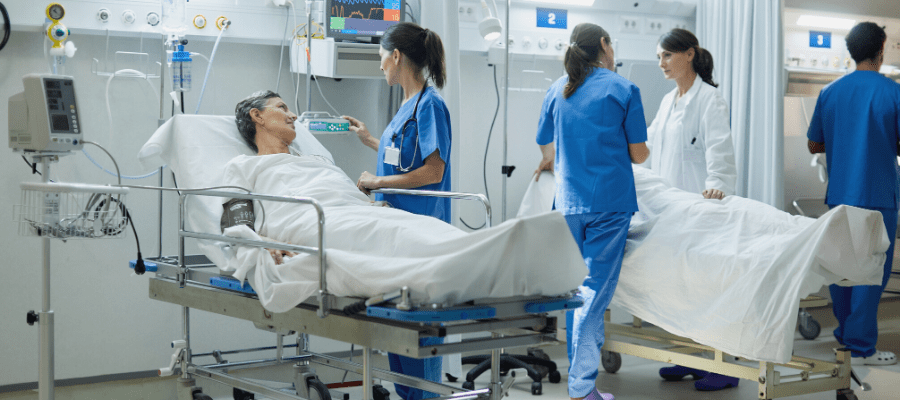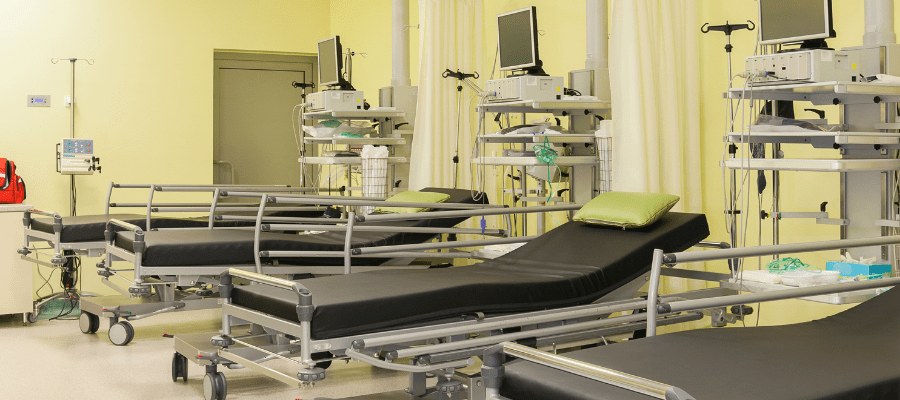Following surgery, the patient is required to go to the post-operative monitoring room (PMSI). Placed in this rest room under the supervision of a nursing team, the patient recovers, eats and eliminates the sedative drugs ingested during the surgery. In short, this time allows him to regain his strength and regain consciousness before being able to go back home. However, reducing the rest time has many advantages for the patient as well as for the health care institution. What tools can be used to reduce post-operative recovery time, and what are the benefits? Answers in this article!
Hypnosedation to reduce postoperative surveillance time: what is the medico-economic interest?
Hypnosedation to reduce IPSS-time
Within the Groupe Hospitalier Mutualiste de Grenoble, a study was conducted in 2020 to evaluate the medico-economic interest of hypnosedation on conizations (Fize, 2020).
| Hypnosedation = technique combining hypnosis with light sedation (AL Xylo). Conization = removal of part of the cervix by natural means. |
Usually performed under general anesthesia, some conisations were performed under hypnosedation in this study, resulting in:
- Before the operation: the replacement of general anesthesia – induction of Diprivan, Sufenta, Sevoflurane and laryngeal mask – by hypnotic accompaniment.
- After the intervention: a shortened SSPI time by 51 min.
Following the results of the study, here is a summary of the duration of patient in the different postoperative departments:
| Postoperative departments | General anesthesia | Hypnosedation | Observed time difference |
| Transition to SSPI | 57 min | 6 min | 51 min |
| Transition to outpatient care | 3h51 | 1h55 | 116 min |
| Length of stay | 5h26 | 2h40 | 2h46 |
| Cost of the stay/act | 517 € | 357 € | 160 € |
In addition, an American study dating from 2002 also demonstrated the medico-economic benefits of hypnosedation in ambulatory radiology (Lang, E-V, 2002).
Based on the results of this study, here are the differences between interventional procedures under standard sedation, and under hypnosedation:
| Intervention criteria | Standard sedation | Hypnosis with sedation | Observed differences |
| Operation time | 1h18 | 1h01 | 17 min |
| Over-sedationSub-sedation | 20 %30 % | 11 %10 % | 9 %20 %* |
| Cost of stay/act | 638 $ | 300 $ | 338 $ |
*Medical hypnosis also reduces the risk of over- or under-sedation by helping to decrease the sedation given to the patient.

Shortening the hospitalization process: medico-economic advantages
For conizations under general anesthesia, hypnosedation has many advantages, both for the patient and for the health care facility (Fize, 2020):
- For the patients :
- reduction of the sedative drugs;
- less nausea and vomiting after conization;
- reduced need for IPSS and overall length of stay.
- For the hospital :
- pricing and duration of surgery equivalent to the AG scenario;
- savings of €160 per conization.
In the USA study, hypnosedation in interventional radiology has medical and economic benefits (Lang, E-V, 2002):
- faster intervention and postoperative recovery of the patient ;
- an economy of 338$par intervention.
Virtual hypnosis, an alternative to hypnosedation
Healthy Mind, medical hypnosis by virtual reality
Healthy Mind has developed therapeutic virtual reality headsets allowing hospitalized patients to escape into relaxing 3D worlds. These medical devices, created with the help of healthcare professionals, combine hypnotic and sophrological principles that are effective in diverting the patient’s attention while relaxing him or her.
Healthy Mind virtual reality headsets can be proposed to patients before, during or after a painful and/or anxiety-provoking procedure:
- Before an intervention: less anxiety and preoperative premedication.
- During an intervention: reduction of pain and sedative consumption.
- After an intervention: faster postoperative recovery, reduction of side effects related to the use of sedatives.
These interventions can concern different services and use cases such as interventional radiology, hepato-gastroenterology, surgery for children and adults, or dental care.

Lithotripsy under virtual hypnosis: what is the medico-economic interest?
In this case, the Bicêtre AP-HP Hospital in Paris already offers Healthy Mind therapeutic virtual reality headsets to its patients, in the context of lithotripsy in the hepato-gastroenterology department.
| Extracorporeal Lithotripsy (ELC) = a method consisting in fragmenting a patient’s stones so that they can be more easily eliminated through the urinary tract. The procedure takes 30 to 40 minutes with the patient lying down. |
Because the procedure is relatively painful, the hospital generally offers patients the option of morphine sedation on demand. To do so, a pump is made available to them: all they have to do is press on it to receive a (capped) dose of sedation.
Since Hôpital Bicêtre offers Healthy Mind headsets to its patients for lithotripsy, they are less inclined to press the pump. In fact, virtual immersion seems to effectively divert their attention!
As a result, the reduction in drug sedation has a double benefit:
- Patients who are conscious after the procedure recover more quickly;
- The switch to SSPI is strongly shortened, even optional. This reduction in IPSS time allows the hospital to take care of more patients and thus optimize the rental of medical equipment.
As a conclusion, the use of Healthy Mind headsets in lithotripsy has many benefits:
- A 50% reduction in morphine consumption, implying a faster recovery of patients.
- An improvement in patient flow in IPSS and ambulatory care, with a 50% reduction in hospitalization time.
This improvement in patient flow has doubled the number of patients taken care of in one morning for lithotripsy, thus saving time for the healthcare team.
Reducing postoperative recovery time: what are the benefits?
Medical and therapeutic benefits for the patient
Real or virtual, hypnosis has many advantages for an hospitalized patient:
- reduction of preoperative anxiety ;
- detour of attention during the procedure, resulting in a reduction in pain and in the use of sedatives (morphine, etc.);
- involvement, awareness and lucidity throughout the patient’s care;
- faster postoperative recovery;
- reduction of postoperative side effects (vomiting, nausea…).

Time and money saving for the health establishment
On the hospital side, the use of a non-drug solution to reduce the rest time after an operation results in savings:
- Reduction of the given drugs (analgesics and antiemetics), as patients are less stressed.
- Reduction in the number of healthcare personnel mobilized for monitoring in IPSS, as the patient recovers more quickly and shortens his or her stay in IPSS and in hospital.
- Optimization of rented medical equipment.
- Increase in the management of hospitalized and operated patients.
Reducing the rest time after an operation (thanks to hypnosedation or virtual hypnosis) has a real medico-economic interest for a health establishment. More than the reduction in the number of given drugs, it is the reduction in the side effects related to drugs which is significant. Indeed, a patient who recovers more quickly spends less time in IPSS and in hospital. He or she then frees up space more quickly to allow the institution to take care of more patients. Therefore, the virtual medical hypnosis proposed by Healthy Mind appears to be an effective tool to reduce the post-operative recovery time of patients. To discover our solution, do not hesitate to ask our teams for a demonstration!
Sources :
- Fize, C. (2020). Evaluation of Medical and Economic Incidence of Hypnosis – HYPNONISAT Trial Groupe Hospitalier Mutualiste de Grenoble
- Lang, E-V. (2002). Cost Analysis of Adjunct Hypnosis with Sedation during Outpatient Interventional Radiologic Procedures. Radiology, 222(2), p. 375-382.
- Observational results observed by the Bicêtre AP-HP Hospital team in Paris during 3 months (2020-2021).







